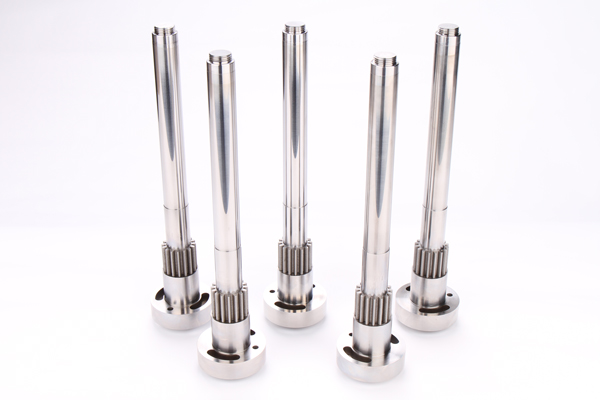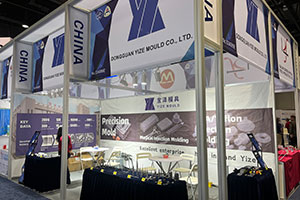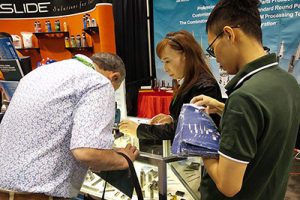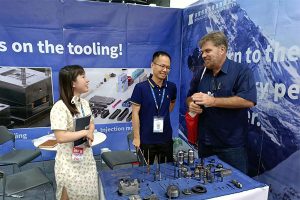Exploring Tungsten Carbide: Unlocking the Mysteries of Its Electromagnetic Properties
In the vast landscape of industry, tungsten carbide shines like a dazzling star. With its remarkable characteristics of high hardness, wear resistance, heat resistance, and corrosion resistance, it has become […]
In the vast landscape of industry, tungsten carbide shines like a dazzling star. With its remarkable characteristics of high hardness, wear resistance, heat resistance, and corrosion resistance, it has become the material of choice for manufacturing high-precision cutting tools, molds, and high-temperature components, playing a pivotal role in numerous fields and winning the favor of countless engineers and manufacturers. However, when we turn our attention to the enigmatic realm of electromagnetism, the electromagnetic properties of tungsten carbide resemble a thick fog, attracting countless researchers to explore and uncover its secrets. This article will delve into the electromagnetic properties of tungsten carbide from multiple dimensions, including its magnetic properties, magnetic permeability, and electromagnetic compatibility, presenting a comprehensive and three-dimensional picture of the electromagnetic world of tungsten carbide.
I. Magnetic Properties of Tungsten Carbide: The Complex Mysteries Behind Weak Magnetism
The magnetic properties of tungsten carbide are a crucial aspect of its electromagnetic properties. Generally speaking, tungsten carbide exhibits relatively weak magnetic properties and can even be classified as non-magnetic or weakly magnetic materials. The main “culprit” behind this phenomenon is the high content of tungsten elements in tungsten carbide. Tungsten atoms are much smaller in size and have a lower solid solubility compared to iron atoms. This characteristic makes them act like “troublemakers,” hindering the spin of iron atoms and thereby reducing the magnetic moment of tungsten carbide, making it difficult for tungsten carbide to display obvious magnetic properties.
Our factory business: carbide parts, mold parts, medical injection molds, precision injection molds, teflon PFA injection molding, PFA tube fittings. email: [email protected],whatsapp:+8613302615729.
Moreover, the solid-phase structure of tungsten carbide also plays a significant role in its magnetic performance. If a large amount of retained austenite is present within tungsten carbide, these austenite phases act like “magnetic moment dispersers,” scattering the magnetic moments and further weakening the magnetic properties of tungsten carbide.
However, the magnetic properties of tungsten carbide do not completely “vanish.” Under certain special conditions, such as when exposed to a magnetic field during the processing, tungsten carbide may “awaken” and exhibit some magnetic properties. Furthermore, some special tungsten carbide alloys, such as tungsten magnet steel and tungsten-cobalt magnet steel, are like “superheroes” in the magnetic world. They possess high magnetization intensity and coercive force, belonging to permanent magnet materials, and have extensive and important applications in fields such as motors and sensors.

II. Magnetic Permeability of Tungsten Carbide: Unique Value in Low Responsiveness
Magnetic permeability is an important indicator for measuring a material’s “response ability” in a magnetic field. It reflects the ratio of the magnetic induction intensity generated by the material to the intensity of the externally applied magnetic field. Due to the relatively weak magnetic properties of tungsten carbide, its magnetic permeability is also relatively poor. This means that in the “arena” of a magnetic field, tungsten carbide is like a slow-reacting dancer, with a weak response to the magnetic field and a low magnetic induction intensity generated.
The magnetic permeability of tungsten carbide is influenced by multiple factors. Chemical composition is the primary factor. The higher the tungsten content in tungsten carbide, the worse its magnetic permeability, as if tungsten elements are the “nemesis” of magnetic permeability. In addition, other alloy elements and impurities also act like “little troublemakers,” having varying degrees of impact on the magnetic permeability. The microstructure is also not to be ignored. Factors such as grain size and grain boundary structure within tungsten carbide are like “fine-tuners,” precisely adjusting the magnetic permeability. Temperature is also an important “regulator.” As the temperature rises, the magnetic permeability of tungsten carbide gradually decreases, similar to the principle of thermal expansion and contraction in terms of magnetic permeability.
Despite its relatively poor magnetic permeability, tungsten carbide demonstrates unique value in certain specific applications. In situations where magnetic field interference needs to be avoided, such as in precision measurement and aerospace fields, the low magnetic permeability of tungsten carbide acts like a “protective shield,” making it an ideal material choice. When manufacturing electromagnetic shielding materials, the low magnetic permeability of tungsten carbide also helps improve the shielding effect, safeguarding the normal operation of electronic equipment.
III. Electromagnetic Compatibility of Tungsten Carbide: Challenges and Solutions in Balance
Electromagnetic compatibility is a crucial indicator for measuring whether a device or system can “coexist harmoniously” in an electromagnetic environment. It requires the device or system to operate normally while not causing unacceptable electromagnetic interference to other devices or systems. In fields such as electronic equipment and communication equipment, electromagnetic compatibility is like a “safety line,” of utmost importance.
For tungsten carbide products, their electromagnetic compatibility mainly depends on their electrical conductivity and magnetic permeability. Due to the relatively poor electrical conductivity of tungsten carbide, its electromagnetic compatibility is relatively good to some extent. However, this does not mean that tungsten carbide products can “rest easy” in an electromagnetic environment. Under certain specific conditions, such as when in contact with electronic equipment, tungsten carbide products may generate electrostatic discharge phenomena, like a tiny “lightning bolt,” causing damage to electronic equipment. Therefore, when designing and using tungsten carbide products, it is essential to fully consider their electromagnetic compatibility issues and take corresponding measures, such as adding anti-static coatings and optimizing structural designs, to avoid potential electromagnetic interference problems and ensure the stable operation of electronic equipment.
IV. Applications of Tungsten Carbide’s Electromagnetic Properties: The Shining Light in Multiple Fields
The electromagnetic properties of tungsten carbide have extensive and diverse applications in the industrial field. When manufacturing high-precision cutting tools and molds, the high hardness and wear resistance of tungsten carbide make it the “top choice.” At the same time, its relatively weak magnetic properties act like an “invisible shield,” preventing magnetic field interference during the processing and ensuring processing accuracy and stability, enabling every part to meet extremely high quality standards.
When manufacturing high-temperature components and safety protection equipment, the heat resistance and corrosion resistance of tungsten carbide once again demonstrate their strong advantages, and its electromagnetic properties also play an indirect yet important role. In situations where magnetic field interference needs to be avoided, such as in precision measurement and aerospace fields, the low magnetic permeability of tungsten carbide makes it an ideal material choice, providing reliable protection for the accurate measurement of precision instruments and the stable operation of aerospace equipment.
V. Conclusion and Prospects: A Promising New Journey
In conclusion, the electromagnetic properties of tungsten carbide have unique characteristics and advantages. Although its magnetic properties are relatively weak and its magnetic permeability is poor, it still has irreplaceable value in specific application scenarios. With the continuous progress of science and technology and the sustained development of industry, the electromagnetic properties of tungsten carbide are like an untapped “treasure trove,” which will find applications and development in more fields.
In the future, we have reason to believe that researchers will continue to delve into the electromagnetic properties of tungsten carbide, just like explorers venturing into an unknown jungle, constantly uncovering its potential application values. Through continuous research and innovation, they will provide solid theoretical support and technical guarantees for the application of tungsten carbide in more fields, allowing this industrial star to shine even brighter on the electromagnetic stage.






